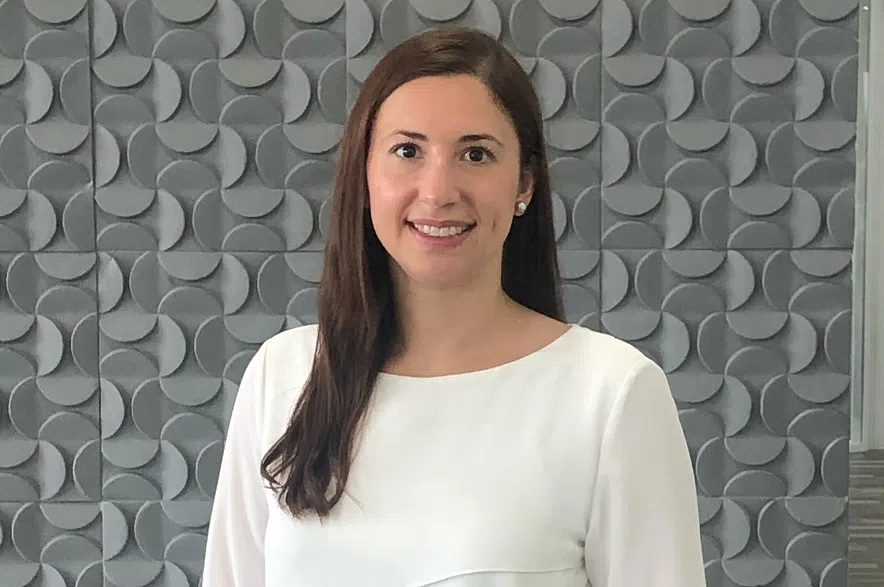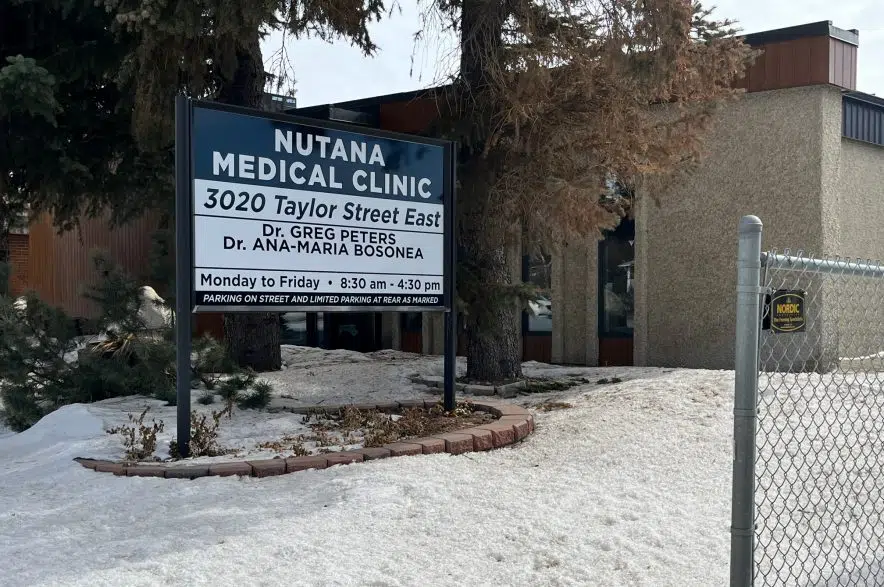The only child allergist in Saskatchewan who was seeing children under 12 and taking referrals is leaving the province at the end of the month.
Dr. Ana-Maria Bosonea returned to work just seven months after giving birth to identical twin boys partly because she knew the demand for her services was so great.
“We’re not able to keep up with the demand,” Bosonea said.
“It’s hard to know how long the waitlist is, but it’s years long.”
That demand fighting against the needs of her young family are the main reasons why she and her husband are moving away from Saskatchewan.
Not enough support
Since returning from maternity leave in January, Bosonea said it’s simply been too difficult for her and her husband – a cardiac surgeon – to juggle caring for both their patients and their sons.
“Trying to get two seven month olds into daycare is impossible,” Bosonea said, noting that many available daycare spots in the province have a waiting list as long as two years.
Without the support of their families – located hundreds of kilometres away in Edmonton – Bosonea said she and her husband are restricted in their working hours by the availability of their nanny, who they share with another family.
READ MORE:
- Province touts progress on health recruitment plan
- Health authority recruiting staff in Saskatoon to help struggling hospitals
- SHA says 116 beds have been added in Saskatoon and Regina through capacity plan
Bosonea disclosed that she and her husband have had to enlist help from their realtor, both of their medical office assistants and neighbours to help care for their sons while balancing their heavy work schedules.
“We’ve really had to use our community just because we haven’t had family able to come as often as we’d like,” Bosonea said, noting that her parents have been borrowing future vacation time to help her as much as possible.
Finding their own trips to Edmonton much more difficult with two babies, Bosonea said her husband took a new job in the Alberta capital so they could have the support of their families around them as they raise their children.
Returning to work has been difficult, too.
Bosonea said she has already had to send patients out of the province to receive care. Once she has left, there won’t be options for children needing care from an allergist in Saskatchewan. All others, Bosonea noted, are also dealing with full practices or only see patients over the age of 12.
“(It’s) very difficult for families, and it’s hard to know what to tell them,” Bosonea said.
While her clinic has been advertising her position and some doctors have expressed initial interest, their recruitment efforts haven’t been successful yet. Bosonea said it’s an impossible task, because the clinic on its own can’t offer any incentives to entice practitioners to the province.
“All we can do is advertise and say we like working here,” she said, noting that the allergy field is a small, niche and often-overlooked area of medicine, despite at least a quarter of the Canadian population suffering from asthma, eczema or allergies and a rise in demand for allergist services.
Allergies on the rise
Bosonea said she’s seen an increase in demand for her specialty, especially among children with allergies. Without a specialist in the province, Bosonea predicted a rise in visits to walk-in clinics and emergency rooms.
“It will lead to a strain on the system,” she said.
Bosonea said she will be getting paid more to continue her work at a practice in Edmonton, in addition to her family’s personal reasons for moving. Her husband will also be making more money in Alberta.
With the demand so high for her specialty in Saskatchewan, Bosonea feels more needs to be done by the provincial government to entice allergists to relocate their practices to this province.
“One or two more allergists in the province will not break the budget,” she said.
When asked about Bosonea’s departure from the province, the Saskatchewan Health Authority (SHA) shared a statement which stated it “cannot share confidential information related to the employment of its employees and physicians,” but remains committed to recruiting and retaining physicians and other health professionals in order to deliver “exceptional, high quality health care.”
The health authority said it is aware of five specialists and general practitioners “with special interest in allergy testing in the province,” but two of them are presently on temporary leave.
What’s next for Saskatchewan patients?
Bosonea said the only real option for her patients now is to leave the province and travel to Manitoba, Alberta or even beyond for care.
She said she has already been arranging follow-ups with some patients to come see her in Edmonton, and is accepting those appointments from anyone willing to make the trip. However, Bosonea acknowledged that travel is expensive and can be difficult in inclement weather and with children in tow. Medical expenses from those trips can be covered by insurance, but not travel costs.
“There’s only so much we can do virtually. I would say the biggest thing people can do is advocate for themselves and their children,” Bosonea advised, suggesting people contact members of government and the media to share their needs, concerns and stories.
“There’s a lot of acceptance here of what’s going on,” she said. “People accept a lot of things that I feel like they shouldn’t.”
Efforts were being made to try and increase pay for allergists based on allergy-specific billing codes, but Bosonea said those have not been successful. A general increase for billing and testing codes is coming for the province, and Bosonea hopes it will be enough to bring a new allergist to Saskatchewan, though she expects it will still take time.
“I feel like our role is going to be taken over by people who mean well,” she said, referring to pediatricians and family doctors who will likely feel as though they must step up to care for their patients.
“It’s a difficult area to jump into without any training.”
Child allergists carry the weight of helping families navigate what can be a change in lifestyle while also, in some cases, assisting children in outgrowing their sensitivities.
Bosonea said often she sees patients who are sensitive to multiple things, like peanuts, tree nuts and sesame.
“It is very difficult for parents to shop – it’s more expensive. They live in fear,” Bosonea said. “I have a 14-year-old (patient) with a nut allergy who has never set foot in a restaurant.”
That worry can invade every aspect of a family’s life and a child’s development, Bosonea said, even in simple ways like needing to bring their own cupcake to a birthday party. Bosonea called it “isolating” for children.
The chances of children naturally outgrowing a peanut allergy is only 20 per cent, and dips to 10 per cent for cashew and sesame allergies.
Sometimes, families in remote communities have to make lengthy trips to find foods that are not contaminated by allergens, and the foods themselves are more expensive. Daycares cannot always accommodate kids with multiple allergies, either.
“I feel like a burden is being placed on practitioners to now try and learn what they can about allergy,” Bosonea mused.
“I definitely have met a few family doctors who are just desperate in terms of getting help for their patients.”
Despite her and her husband’s upcoming departure from Saskatoon at the end of April, Bosonea said there is a bittersweet feeling, as she has really enjoyed her time in the city
“I don’t know that we’ve ever lived in a place as friendly,” she said, and lamented that she will never again have such a short commute to work.












